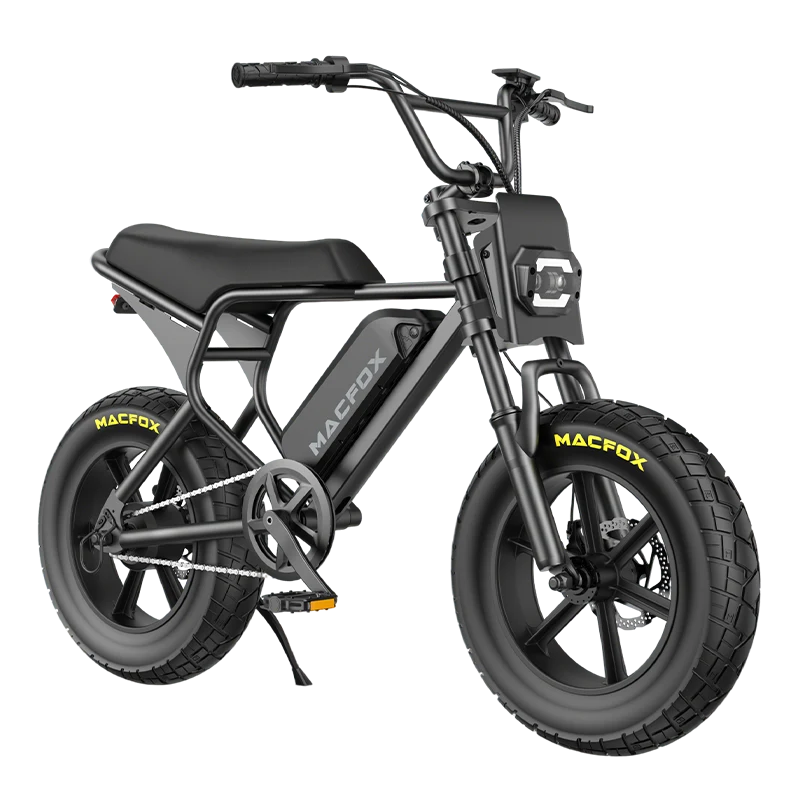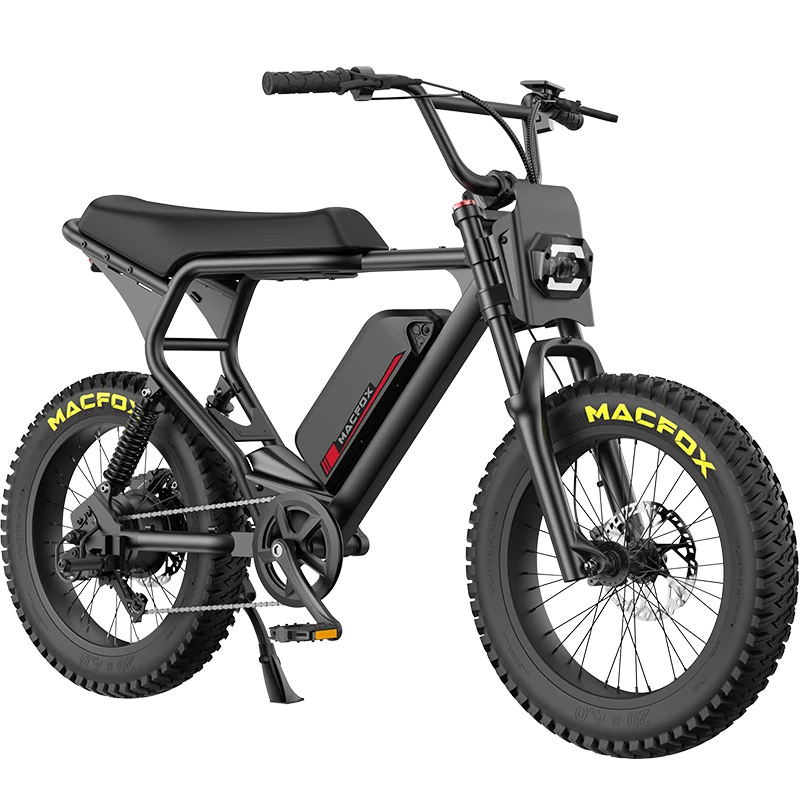Electric bikes (e-bikes) have become a game-changer in urban commuting, fitness, and eco-friendly travel. But behind their effortless glide and responsive performance lies a small, nearly invisible component doing much of the heavy lifting—the Hall sensor.
These tiny sensors are the unsung heroes of your e-bike’s performance. They don’t just sit there—they work around the clock, translating magnetic fields into real-time data for your motor controller. This article dives into what Hall sensors are, how they work, why they matter, and how to maintain or replace them when they go bad.
What is a Hall Sensor and Why Does Your E-Bike Need One?
At its core, a Hall sensor is an electronic component that detects magnetic fields. In e-bikes, they’re usually tucked inside the motor or near the pedal crank, constantly monitoring the motion of magnets as you pedal or as the motor turns.
As the magnets move, the Hall sensor picks up these changes and turns them into electrical signals. These signals are then sent to your bike’s controller, which decides how much power the motor should deliver. Without this data, your bike wouldn’t know when to assist—or how much.
Imagine trying to cook without knowing the temperature of your oven. That’s what an e-bike motor would feel like without a Hall sensor: inconsistent, unpredictable, and inefficient.
How the Hall Effect Powers Smart Performance
The Hall effect, named after physicist Edwin Hall, is the principle behind Hall sensors. It works like this: when electric current flows through a conductor exposed to a magnetic field, the magnetic field pushes the electrons to one side, creating a voltage (the Hall voltage). This voltage changes depending on the strength and direction of the magnetic field, and that's what the sensor reads.
In an e-bike, the Hall sensor measures these magnetic shifts to understand motor position, speed, or pedal movement. This data enables:
-
Precise motor timing (commutation)
-
Responsive pedal assist (PAS)
-
Efficient power use for extended battery life
It’s a real-time translator, turning physical movement into actionable electronic language for the motor controller.
Types of Hall Sensors in Electric Bikes
Different sensors serve different roles in an e-bike:
1. Analog Hall Sensors
These produce a smooth, continuous output that reflects the exact strength of the magnetic field. Perfect for applications like throttle control, where you want precision and smooth power delivery.
2. Digital Hall Sensors
These are binary: on or off. When a magnetic threshold is reached, they switch state. They’re simple, durable, and ideal for rotor position detection in motors.
3. Linear Hall Sensors
A specialized analog sensor, linear versions are used when you need a direct, proportional relationship—like throttle sensors where every millimeter counts.
4. Switch Hall Sensors
These act like digital toggles. When a magnet gets close enough, they "flip the switch." You’ll find these in pedal assist systems (PAS), activating the motor when pedaling starts.
5. Bipolar and Unipolar Sensors
Bipolar sensors detect both north and south magnetic poles. Unipolar sensors only detect one. Depending on your e-bike’s design, either might be used for directional sensing or simple rotation detection.
6. Integrated and Redundant Sensors
Some modern motors have sensors built-in for compactness and water resistance. Redundant sensors offer backup in case one fails, ensuring a safer ride.
Where Hall Sensors Are Used in E-Bikes
Motor Control
In brushless motors, three Hall sensors spaced 120° apart read the rotor’s position. The controller uses this info to energize the motor’s coils in just the right sequence. The result? Smooth, efficient rotation and responsive acceleration.
Pedal Assist System (PAS)
PAS sensors often sit near the crank and use magnets on a rotating disc. As the rider pedals, the Hall sensor picks up these magnetic pulses and sends a signal to the controller to deliver motor assistance. Some can even detect pedaling direction and speed.

Benefits of Hall Sensors in E-Bikes
✅ Smooth and Responsive Power
Ever wonder how your e-bike “knows” to help just when you need it? That’s the Hall sensor at work, relaying real-time info to the controller. This translates to smoother acceleration and seamless transitions.
✅ Improved Efficiency and Range
When the controller gets accurate data, it can regulate power more efficiently. That means less battery drain and more miles per charge.
✅ Reliable Across Terrains
Whether you’re climbing hills or cruising downtown, Hall sensors adjust motor output to match conditions. You’ll get consistent support no matter the slope.
✅ Low Maintenance, High Durability
Because Hall sensors operate without physical contact, there’s less wear and tear. That makes them more reliable—even in wet or dusty conditions.
Common Hall Sensor Issues (And How to Troubleshoot)
Like any component, Hall sensors can fail. Watch for these warning signs:
-
Motor cuts in and out
-
No pedal assist
-
Jerky or weak motor power
-
Unusual grinding or buzzing
-
Error codes on the display (like 21, 22, or 23)
🔧 Troubleshooting With a Multimeter
-
Turn off the e-bike and disconnect the battery.
-
Access the Hall sensor wires (usually red, black, and signal wires like yellow, blue, or green).
-
Apply 5V to red (VCC) and black (ground).
-
Use a multimeter to test voltage changes on each signal wire while manually spinning the motor or crank.
-
Normal readings: signal should flip between 0V and 5V.
-
No change = bad sensor.
-
If the sensor fails this test, replacement is likely needed.
Replacing a Faulty Hall Sensor
For Motor Sensors:
-
Remove the motor’s side cover.
-
Identify the faulty Hall sensor.
-
De-solder and remove the bad sensor.
-
Solder in a replacement (like the Honeywell SS41).
-
Reassemble, test, and ride.
For PAS Sensors:
-
Remove the left crank.
-
Slide off the old sensor.
-
Slide the new one into place and reconnect the cable.
-
Reinstall the crank and test your PAS.
Not confident? A bike technician can make sure everything’s safely reassembled and functional.
Preventing Hall Sensor Failure
You can prolong the life of your Hall sensors with simple care:
-
Keep sensors and wiring clean and dry.
-
Inspect for frayed wires or loose connectors.
-
Avoid overloading the bike—excess heat strains components.
-
Apply dielectric grease or sealant to exposed connectors.
-
Store the bike indoors or use covers in rainy weather.
Conclusion
Hall sensors may be small, but their role in e-bike performance is massive. They bring harmony to your ride—making it smooth, smart, and safe. From throttle control to pedal assist, they keep your e-bike responsive, efficient, and fun.
While they’re generally reliable, knowing how they work—and how to fix or replace them—can save you time and frustration down the road. With proper care, these sensors will keep your electric bike running like a dream.
FAQs
Q: How do I know if my Hall sensor is faulty?
Watch for symptoms like erratic motor behavior, power loss, or error codes. A multimeter test is the most reliable way to confirm failure.
Q: Can I ride an e-bike with a Hall sensor issue?
It’s not recommended. A failing sensor can make your motor unreliable or even unresponsive, which could be dangerous.
Q: Do all e-bikes use Hall sensors?
Most do, especially those with brushless motors and PAS. Some high-end models may use encoders or sensorless designs, but Hall sensors are still very common.
Q: What’s the difference between analog and digital Hall sensors?
Analog sensors give a range of values based on magnetic strength, while digital sensors just turn on or off once a threshold is met.
Q: How often should Hall sensors be inspected or replaced?
They typically last several years. Check them annually during routine maintenance, especially if you ride in harsh conditions.



















1 thought on “How Hall Sensors Power Your E-Bike: Benefits, Failures, and DIY Repairs”
Dave
Very very Well written article
I maintain / fix our fleet of e-bikes for our park rangers. Is there a school or certification process that is available?
Thx
Dave